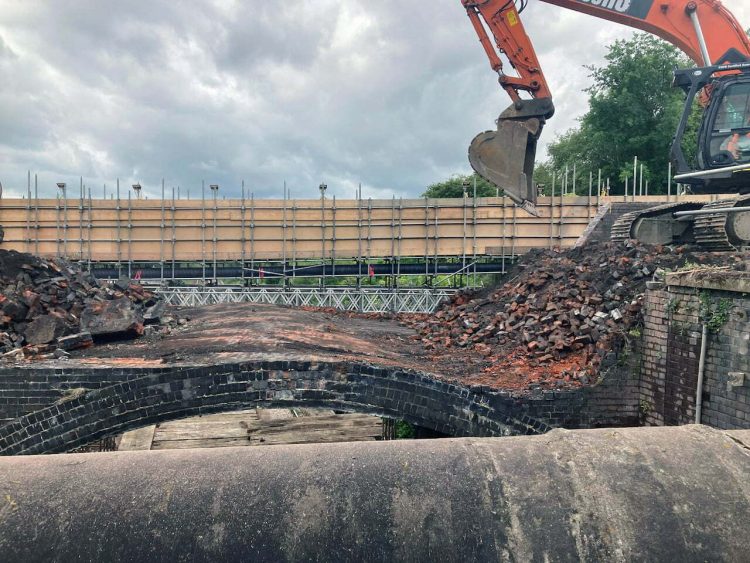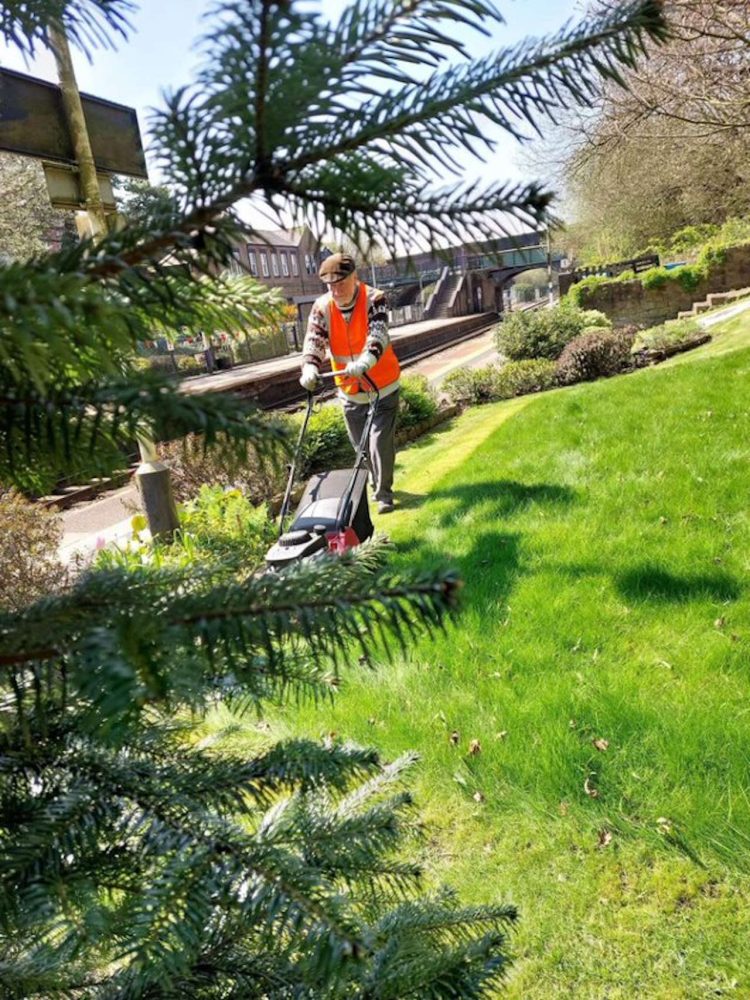The Grade II listed Deep Pit footbridge at Hindley near Wigan in Greater Manchester is being raised to accommodate overhead electric wires during the electrification of the Wigan to Bolton railway line.
The £100+m project to electrify the Wigan to Bolton line will enable the use of greener, cleaner, and quieter electric trains and improve travel across the North West.

As well as raising the bridge, two new ramps will be installed to give the bridge completely step-free access for the first time since it was built in 1887.
Work is due to start in the next few months and be complete by early next year.
Deep Pit bridge is on the border of Hindley and Ince in Wigan and needs to be raised so the electric wires carrying 25,000 volts can be installed safely above the line with plenty of clearance from the bridge above.

The bridge is unusually long, built of wrought iron, and originally spanned nine tracks. Its architectural interest is because of its elegant design.
As well as serving as a footbridge, the bridge carried signalling equipment until the rationalisation of signalling in the area in 1972.

I am grateful to Wigan Council for their collaboration, and the local community for their contribution to the public consultation on the work at Deep Pit bridge.
This Grade II listed structure will now be future-proofed for years to come as we raise the bridge’s height and add new ramps. This will make way for electric overhead lines as part of the Wigan to Bolton electrification project.
Sarah Bull, Sponsor at Network Rail





Responses
Third rail systems typically run no higher than 750VDC (else leakage to earth becomes more of a problem than it already is) whilst overhead cables run at 25kV AC. To supply a train with 5MW would draw over 6500A from third rail or just 200 from overhead wires. Thus the infrastructure to supply third rail must be much, much heaver than that over overhead wires.
The significantly higher voltage of overhead wires also has the advantage that there are fewer losses in simply getting the electricity to the trains. The same reason is behind that fact that electricity transmission grids run at 400kV (and more), not the much lower voltages we use at the point of consumption.
A third rail system is open to contamination from rain, ice, snow and leaves as well as other dirt and debris. Hence such systems are typically the preserve of underground and relatively slow moving metro networks where each train has multiple electrical pickups. They work far less well at speed.
Anyone on the railway has to try much harder to touch a live overhead cable – but the third rail is accessible by simply falling over.
There are disadvantages of overhead cables, of course – an out of gauge load or vehicle – or faulty pantograph could easily drag down a whole section of cantenary and this could deny power to a wide area. However, disadvantages such as this are seen to be outweighed by the benefits and thus overhead cabling tends to be preferred with alternative power sources (such as batteries, or as a last resorts, diesel generators) being used for those areas where the cost or aesthetics of overhead cabling are unpalatable.
The main reason for NR saying a few years ago that they’d like to change from 3rd rail to OLE on the southern region, is that 3rd rail is so wasteful of energy. A lot of the energy is lost as heat.
The East Lancashire Line could perhaps see electrification to extend to Blackburn, Accrington, Burnley and electrification to Rochdale. And Northern to use Class 323, Class 319 and Class 331.
Third rail is limited to 100mph so not really suitable for main lines.
When Scotland going to be electrification. Nothing passed Edinburgh or Glasgow.
What are the relative safety levels comparing O/H and 3rd rail?
Network Rail are electrifying the East Kilbride line and have electrified to Barrhead to allow Class 380 and Class 385 to operate to Barrhead. And the Stranraer line could also be upgraded to have electrification so that Class 385s can operate to Stranraer.
But can the level of safety be maintained?
Regarding having to raise this elegant bridge for electrification, the London Underground, metros and many train lines in the South East and South West use the third rail system. This seems to be very reliable and trains are able to go at fast speeds, e.g. Thameslink. I am no elecrical expert but when we hear of yet more ‘overhead line damage’ I wonder why we don’t use the third rail system more which must be far cheaper to install and maintain.
Just a thought.
David Hague, Sheffield.
Due to safety concerns (I.e. stepping on a 750 DC) and performance limits, the ORR heavily discourage new third rail electrification and is even looking at replacing the existing 3rd rail with overhead electrification. This is the reason why trains run on batteries between Headbolt Lane and Kirkby
If someone treads on a 750DC rail, wouldn’t they have been trespassing? When you look out of a carriage window, some third rails seem to have a cover over them. Are there many incidents with third rails to make the ORR worry? Overhead electrification looks to be very expensive and time consuming – look how long it is taking for the Midland Main Line electrification to extend further north.
David Hague.
Under the Occupiers’ Liability Act 1984 Network Rail will still owe a duty of care to trespassers if they have reasonable grounds to suspect that there is a risk to them on the premises. There are also all of the maintenance staff who are out every day on live lines where it is a lot safer when the 25kv is 4m in the air rather than having to cross within cms of 750DC. You could put in a FoI request to Network Rail or the ORR to find out how many incidents have happened on 3rd rail.